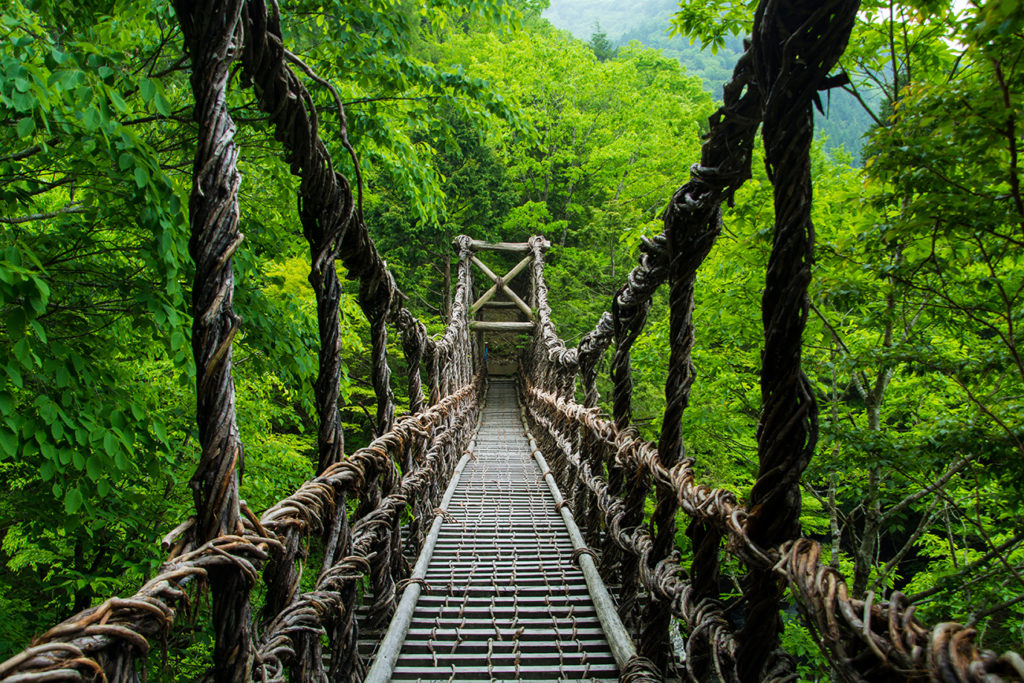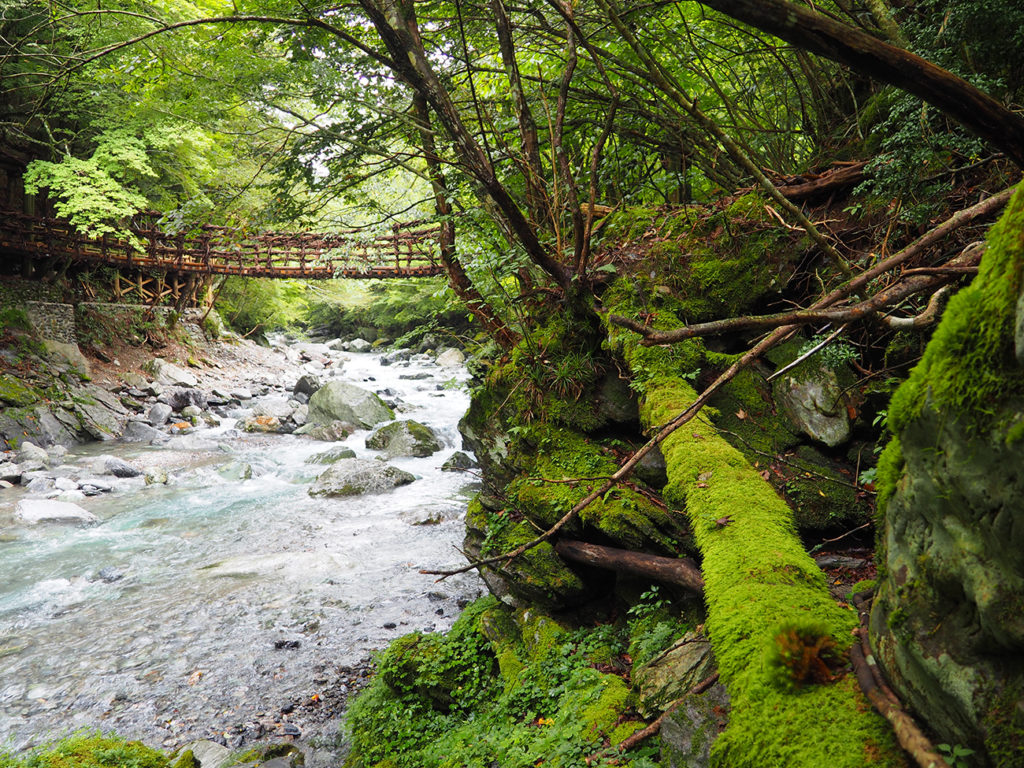
The Enchanting Iya Valley
Iya Valley is considered one of the last vestiges of Japan’s old world.
Historically, the remote Iya Valley (祖谷渓, Iyakei) served as a sanctuary for the members of the Taira Clan or the Heike, who took refuge in the region after losing the Genpei War (1180-1185), during the end of the Heian Period. Descendants of the Heike can still be found in the area hundreds of years later around the Iya valley.
Tourism is popular in the western area of the valley, Nishi-Iya, which draws a number of visitors because of its historic vine bridge (kazurabashi) and hot spring baths. The eastern area, Higashi-Iya or Oku-Iya, can still be relatively difficult to reach, making its natural beauty even more undisturbed. Thirteen vine bridges once spanned the area; in early times, those bridges were the only method for crossing rivers.
History is not clear on the origins of the vine bridges, but legends tell us that they were built either by Kobo Daishi, the founder of the Shingon Sect of Japanese Buddhism, or by the Heike refugees. Only three vine bridges survive today and are maintained.
Iya Kazurabashi.
Iya Kazurabashi (祖谷かずら橋)
Iya Kazurabashi is the largest and most popular of the three remaining bridges. It stretches 45 meters at the center of the valley across the Iya River. The vine bridge gives visitors a majestic view of the river, 14 meters below. The bridge is rebuilt every three years and is anchored to gigantic cedar trees on both ends. It is reinforced by modern steel cables hidden within the vines for extra safety.
Oku-Iya Kazurabashi
Oku-Iya Kazurabashi (奥祖谷二重かずら橋) or couples bridges
The larger of the two bridges is Husband Bridge (Otto no Hashi). It stretches 44 meters across the Iya River beside a small waterfall. Slightly below Otto no Hashi is Wife Bridge (Tsuma no Hashi) which spans 22 meters upstream. The bridges contain steel cables hidden within vines that are replaced every three years.
The bridges are connected with each other using a network of paved hiking trails that lead to camping grounds along the far side of the river.
Wild Monkey Bridge is found right next to Tsuma no Hashi. This is a type of bridge that is made of a wooden cart suspended on a rope over the main bridge. It was used to transport goods and people and was reconstructed for visitors to try out by pulling themselves across the river.



